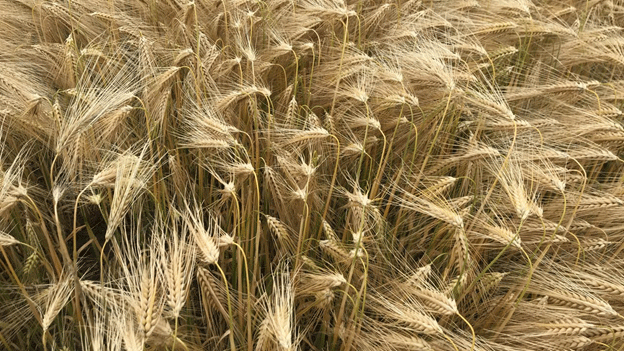East Co. Down cereal grower Allan Chambers has confirmed a yield of 4.8 tonnes per acre (t/ac) from the first of his 2024 winter barley crops, with moisture levels at 19% and bushel weights averaging 68kg/hectoliter (HL). Chambers attributes these exceptional yields to the cool and damp conditions of the spring months, which extended the grain fill period.
Exceptional Crop Performance
Allan Chambers, who has 200 acres of barley to harvest, noted, “We only grow six-row hybrid varieties. For the most part, this year’s winter barley followed crops of winter wheat. We have one field completely harvested and the headlands combined in another four.”
This year’s yield is slightly behind the record performance of 2015 but is significantly higher than the farm’s average output over the past three years, which stood at 3.75t/ac. “Year-on-year, our barley yields are up by approximately 1t/ac,” Chambers said.
Factors Contributing to High Yields
The excellent yields are attributed to the favorable growing conditions throughout the winter and spring. The cool and damp spring allowed for an extended grain fill period. “We farm on light, dry land. All of the 2023/2024 barley crops were planted out in good conditions at the end of September last year. They established well and came through the winter and spring period in excellent condition,” Chambers explained.
In addition to high grain yields, Chambers also reports excellent straw yields. The strong demand for straw is expected to keep prices high, with a standard 4X4 bale currently fetching a minimum price of £30 ex-field.
Outlook for Other Crops
Chambers’ winter wheat, covering 250 acres, also shows promise. With grain fill now complete, the wheat harvest is expected by the third week of August, weather permitting. “The heads are that heavy that many of the plants are starting to bend over. But this is not a bad thing; it bodes well for a good harvest in a few weeks’ time,” he noted.
However, managing septoria in winter wheat remains a challenge. Chambers emphasized the importance of regular fungicide applications, costing £60 per acre each time, to keep the disease at bay. “We sprayed regularly to keep the disease out of the crops throughout the growing season,” he said, acknowledging the costs involved.
Allan Chambers’ success with his winter barley crop in Co. Down highlights the impact of favorable weather conditions and effective crop management practices. His experience underscores the potential for high yields in winter barley and the importance of disease management in winter wheat. As he prepares for the upcoming wheat harvest, the lessons learned this season will undoubtedly inform future agricultural strategies.
Error





